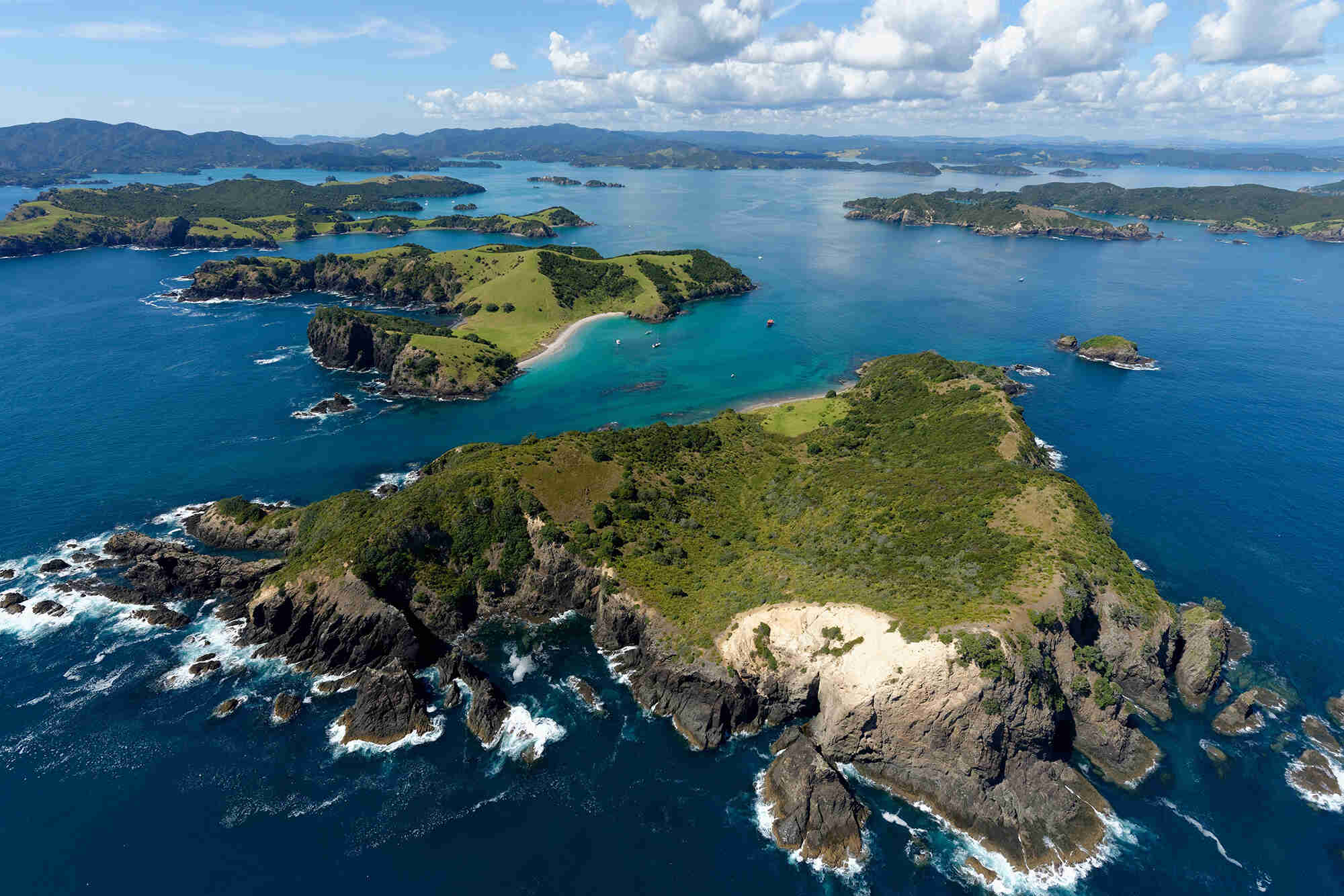
Welcome to the wonderful world of biodiversity hotspots! These remarkable regions are home to an extraordinary variety of plant and animal life, representing a wealth of natural wonders unique to each area. In this article, we will delve into the fascinating facts about biodiversity hotspots that will leave you in awe of the immense biological richness found in these special places.Biodiversity hotspots are defined as areas with exceptionally high levels of endemic species, which means they are found nowhere else on Earth. These hotspots are not only remarkable for their sheer diversity, but also for the critical role they play in fostering the overall health of our planet. By protecting these areas, we can safeguard countless species from extinction and preserve the delicate balance of ecosystems.So, get ready to journey through some astonishing facts about biodiversity hotspots and uncover the hidden treasures that make these regions so vital to our planet’s survival.
Key Takeaways:
- Biodiversity hotspots cover a small area but are home to over half of all plant species and 42% of terrestrial vertebrate species, making them crucial for preserving diverse flora and fauna.
- These hotspots are under threat from human activities, but protecting them is essential for maintaining Earth’s ecosystems and potential for new medicines.
Biodiversity hotspots cover just 2.3% of the Earth’s land surface, but they are home to more than half of all plant species and 42% of terrestrial vertebrate species.
These hotspots are incredibly diverse and support an immense variety of flora and fauna.
The term “biodiversity hotspot” was coined by Norman Myers in 1988.
Myers identified 10 hotspots initially, but the number has since increased to 36 as more areas were recognized for their unique biodiversity.
The Biodiversity Hotspots concept focuses on areas that have high levels of endemism, meaning they contain species found nowhere else on Earth.
This makes these regions crucial for the conservation of unique and irreplaceable species.
The Amazon Rainforest in South America is the largest biodiversity hotspot in the world.
It is home to an estimated 16,000 tree species, representing one in ten known species on Earth.
Madagascar is a biodiversity hotspot that is incredibly rich in unique plant and animal life.
Approximately 90% of the species found in Madagascar are endemic to the island, meaning they are found nowhere else in the world.
Biodiversity hotspots are not evenly distributed across the globe.
They are concentrated in tropical regions such as the Caribbean, Central and South America, Africa, and Southeast Asia.
Biodiversity hotspots are under significant threat from human activities such as deforestation, habitat destruction, pollution, and climate change.
These activities result in the loss of species and ecosystems at an alarming rate.
Biodiversity hotspots play a crucial role in providing ecosystem services such as water purification, pollination, and climate regulation.
Preserving these hotspots is essential for maintaining the functioning of the Earth’s ecosystems.
The Western Ghats and Sri Lanka biodiversity hotspot in India is recognized as one of the world’s top biodiversity hotspots.
It is home to numerous endemic species, including the iconic Bengal Tiger and the Asian Elephant.
The Cape Floristic Region in South Africa is the smallest recognized biodiversity hotspot but boasts an extraordinary level of plant diversity.
It has the highest concentration of plant species within its boundaries.
Biodiversity hotspots are not only important for biodiversity conservation but also for the livelihoods of local communities.
Many indigenous communities depend on the resources and ecosystem services provided by these hotspots for their survival.
The Wallacea biodiversity hotspot, located in the region between Bali and Lombok in Indonesia, is known for its high level of marine biodiversity.
It is home to numerous coral species, fish, and other marine organisms.
Biodiversity hotspots contribute to the overall health and resilience of the planet’s ecosystems.
They act as refuges for species, allowing them to adapt and survive in a changing environment.
The Mediterranean Basin biodiversity hotspot is known for its rich cultural heritage and biodiversity.
It is home to iconic species such as the European Mouflon and the Mediterranean Monk Seal.
Biodiversity hotspots are not permanent features.
They can shift and change over time due to factors such as climate change and human activities.
Biodiversity hotspots are a conservation priority for organizations such as Conservation International and the World Wildlife Fund (WWF).
These organizations work to protect and preserve these areas and the species within them.
The Sundaland biodiversity hotspot, encompassing parts of Southeast Asia, is known for its incredible diversity of primates, including the orangutan and the proboscis monkey.
It is also home to a wide range of plant species, many of which have medicinal properties.
Biodiversity hotspots are an essential aspect of global efforts to halt the ongoing loss of biodiversity.
By protecting these areas, we can help preserve our planet’s incredible wealth of species and ecosystems.
Biodiversity hotspots are not only valuable for their ecological significance but also for their potential value in fields such as medicine and biotechnology.
Many plant and animal species found in these hotspots have unique chemical properties that could lead to the development of new drugs and treatments.
In conclusion, the 19 astounding facts about biodiversity hotspots highlight the critical importance of these areas in preserving Earth’s incredible biodiversity. It is crucial that we continue to prioritize the protection and conservation of these hotspots to ensure a sustainable future for our planet.
Conclusion
In conclusion, biodiversity hotspots are crucial areas that are rich in species diversity and are under threat from human activities. These remarkable areas are home to a wide range of plants, animals, and ecosystems, providing invaluable resources and services. By understanding and conserving these hotspots, we can not only protect countless species from extinction but also safeguard the vital ecological processes that sustain life on Earth.
FAQs
1. What is a biodiversity hotspot?
A biodiversity hotspot is a region that is ecologically significant and supports an exceptional concentration of plant and animal species, many of which are found nowhere else on the planet.
2. How many biodiversity hotspots exist?
Currently, there are 36 recognized biodiversity hotspots worldwide, located in various regions across the globe.
3. Why are biodiversity hotspots important?
These hotspots play a vital role in maintaining ecological balance, supporting essential ecosystem functions, and providing invaluable resources such as clean water, food, and medicines.
4. What are the major threats to biodiversity hotspots?
The major threats to biodiversity hotspots include habitat destruction, climate change, pollution, invasive species, overexploitation of resources, and human encroachment.
5. How can we protect biodiversity hotspots?
We can protect biodiversity hotspots through various conservation strategies, including creating protected areas, implementing sustainable land use practices, promoting education and awareness, and engaging local communities in conservation efforts.
6. Can biodiversity hotspots recover from damage?
While the impact of human activities on biodiversity hotspots can be severe, with proper conservation efforts, these areas have the potential to recover and regain their ecological richness.
7. How can individuals contribute to the conservation of biodiversity hotspots?
Individuals can contribute to the conservation of biodiversity hotspots by supporting local conservation organizations, practicing sustainable lifestyles, advocating for responsible policies, and spreading awareness about the importance of biodiversity.
Was this page helpful?
Our commitment to delivering trustworthy and engaging content is at the heart of what we do. Each fact on our site is contributed by real users like you, bringing a wealth of diverse insights and information. To ensure the highest standards of accuracy and reliability, our dedicated editors meticulously review each submission. This process guarantees that the facts we share are not only fascinating but also credible. Trust in our commitment to quality and authenticity as you explore and learn with us.


